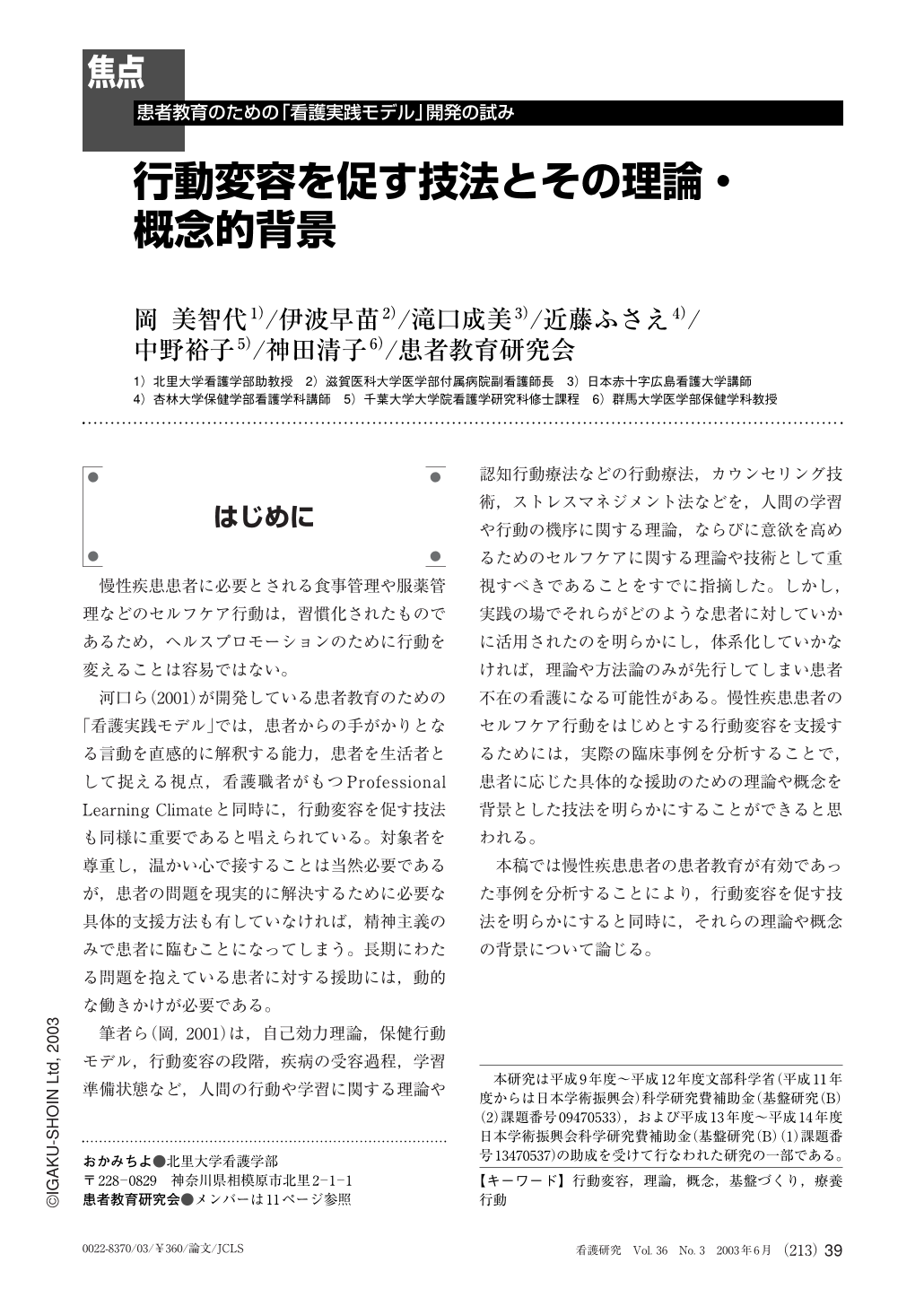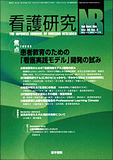Japanese
English
- 有料閲覧
- Abstract 文献概要
- 1ページ目 Look Inside
- サイト内被引用 Cited by
はじめに
慢性疾患患者に必要とされる食事管理や服薬管理などのセルフケア行動は,習慣化されたものであるため,ヘルスプロモーションのために行動を変えることは容易ではない。
河口ら(2001)が開発している患者教育のための「看護実践モデル」では,患者からの手がかりとなる言動を直感的に解釈する能力,患者を生活者として捉える視点,看護職者がもつProfessional Learning Climateと同時に,行動変容を促す技法も同様に重要であると唱えられている。対象者を尊重し,温かい心で接することは当然必要であるが,患者の問題を現実的に解決するために必要な具体的支援方法も有していなければ,精神主義のみで患者に臨むことになってしまう。長期にわたる問題を抱えている患者に対する援助には,動的な働きかけが必要である。
We analyzed cases in which patient education was effective for the treatment of chronic illness, to clarify methods to promote behavioral modification in patients,and evaluate their theoretical and conceptual background. Nurses who performed effective intervention utilized approaches of counseling and laid the foundation for promoting behavioral modification as the first step. In this step, 1) methods to share each patient's life, 2) methods to have patients listen to nurses, and 3) methods to assure opportunities of self-expression for patients were found. In the second step, patients were encouraged to start the therapeutic behavior by means of healthy behavior models, andragogy, and empowerment, and 1) methods to enhance the awareness of patients, 2) methods to provide knowledge and information, and 3) methods to promote self-determination were employed. As the third step, nurses encouraged patients to maintain, and habituate themselves to, willingness and behavior using learning theories, cognitive behavioral therapy, and social support. This step consisted of 1) presentation of actual measures and 2) use of knowledge to help patients maintain and habituate themselves to willingness and behavior.
We examined new cases that responded well to nurses' guidance to confirm the validity of these methods, and found that they were used effectively.

Copyright © 2003, Igaku-Shoin Ltd. All rights reserved.


